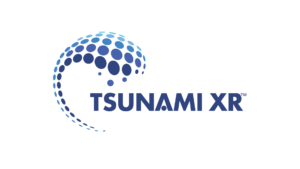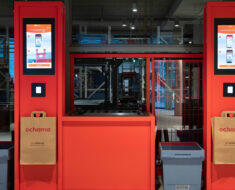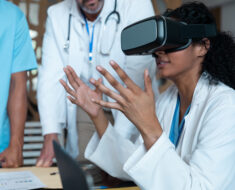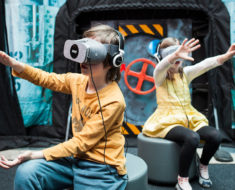For some reason VR and 3D modeling have always gone hand in hand. So much so that it would be easy for a user to confuse the two technologies. And while 3D modeling does find a particularly suitable home in VR the two are not mutually exclusive. Looking back at some of the earlier uses of makes of 3D for entertainment purposes shed’s light on the two technologies congruent come up. Companies like Tsunami XR are bringing the technologies to new heights.
One of the earlier marriages of VR and 3D modeling that was available to the public was an attraction at the Happiest Place on Earth. The attraction debuted in 1986 and was called Captain Eo. The attraction was a science fiction movie that incorporated: in-theatre 3D effects with the cool 80’s 3D glasses; rumble seats that bounced to the beat of the musical numbers; hydraulic leg ticklers, smoke machines, lasers that were synchronized to the film, hidden water-sprayers, and starfield projections that filled the theatre. All in all, it cost $30 million to create the effects and produce the film. In 1986, it was the most expensive movie ever made on a per-minute basis costing almost $2 million dollars per minute.
The creators of the attraction wisely knew that for the effects to truly take flight it would need top-quality content to drive the technologies. Science fiction was trending in 1986 and was the perfect genre to utilize the immersive techniques. The theme parked pulled out all the stops and hired the king of sci-fi, Mr. George Lucas, to write Captain Eo’s script. Francis Ford Coppola directed the short film. Starring in the musical short was none other than Michael Jackson himself. For those under 20, Jackson was at the height of his solo popularity in 1986, coming off the success of his largest commercially successful album, Thriller. Some would argue that Captain Eo was the first and last VR content to utilize such marquee names in its production.
READ MORE: Alex Hern of Tsunami XR: Trailblazer of Extended Reality
To say the least, Captain Eo, was way ahead of its time in the world of VR and 3D and left the attraction goer in a state of wonder about the possibilities of the technology. One such possibility that certainly stemmed from Eo was the idea of using VR as art. Yes, VR had often been developed for entertainment purposes, mostly cinema, but some gaming purposes too. But Eo was the first time that the expanded dimensions offered by VR were used as a new medium for art. This is a medium that is still being explored today.
One artist, Laurie Anderson, is using VR to create a story-centric art installation. The Chalkroom, which opened at the Massachusetts MoCA in 2017. In, The Chalkroom, viewers walk through a series of chambers that are covered in handwritten texts while wearing an HTC Vive head-mounted display. The curator of the Massachusetts MoCA said, “VR has become increasingly important in the museum setting, primarily as a didactic tool enabling us to re-create known places and provide visitors with virtual visits to distant or fragile places or places that no longer exist, It’s only recently that we’ve begun to consider the medium as a means in itself to create original and often surreal environments born of an artist’s imagination.”
Alex Hern and the Tsunami XR team
Both 3D modeling and VR have moved beyond their entertainment related upbringings and are now beginning to be in commercial settings. One company that is integrating VR and 3D modeling into business solutions is Tsunami XR. Fearless leader Alex Hern has molded the Los Angeles based VR company into a leading provider of VR service provider.
Tsunami XR has two primary software offerings that allow business in a variety of industries to utilize both VR and 3D modeling. The first offering, Tsunami XR Workspaces, allows for virtual collaboration throughout an organization. A company’s travel cost become non-existence with Workspaces as company members from around the world can seamlessly work together daily from the comfort of every bodies home office. Tsunami XR’s second offering, Tsunami XR Studios, is a 3D rendering, animation, simulation and visualization business tool that is bringing 3D modeling to the next level. For example, Tsunami XR recently ran some field trials with a major energy company to aid employees swap out a pneumatic drill component using a Microsoft HoloLens HMD. The process which usually takes two hours was completed in 15 minutes with Tsunami’s XR and 3D modeling solutions.
The power of VR and 3D modeling is sure to bring about business solutions of the future. Other industries that are uncovering the benefits of VR include Construction, Manufacturing, Automotive, Industrial Equipment, Healthcare & Life Sciences, Energy, Aerospace and Defense. Ask yourself, would my business benefit from VR and 3D modeling solutions?
Learn more about Alex Hern and Tsunami XR on LinkedIn
Dil Bole Oberoi





